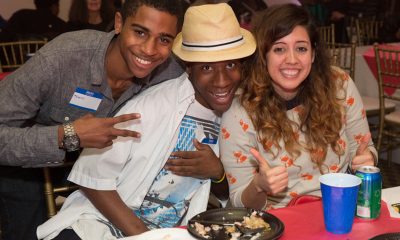Arts & Entertainment
‘It’s Where I Belong’ spotlights West Hollywood’s drag legacy with new exhibition
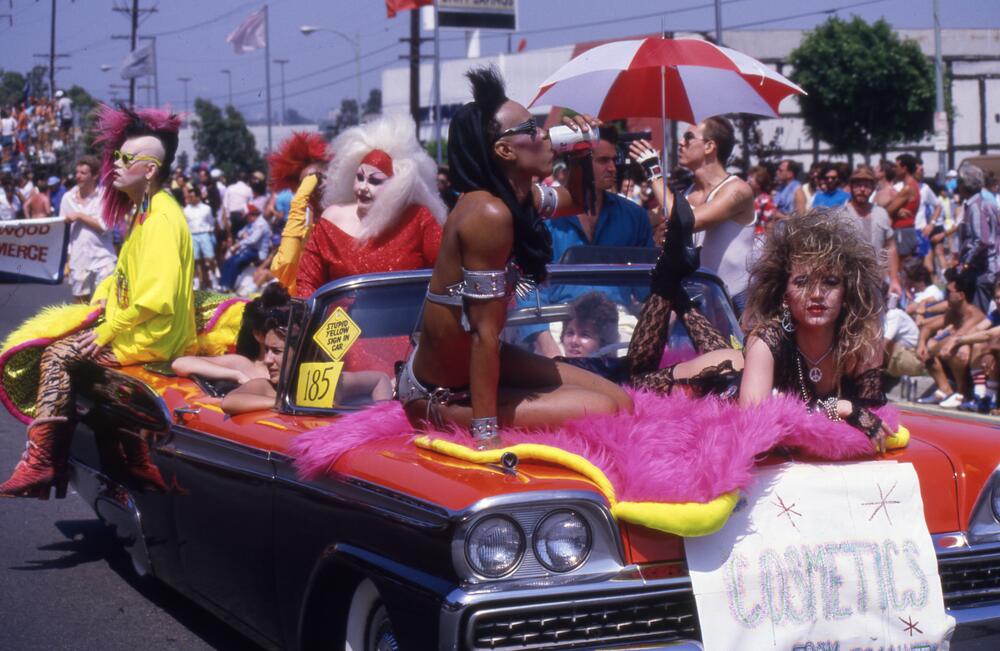
A new exhibition celebrating the artistry and resilience of drag culture is set to open next Thursday, May 22 at the One Gallery in West Hollywood.“It’s Where I Belong,” will be part of the city’s 40th anniversary celebration, running through June 29, aligning with Pride season festivities.
The exhibition curated by University of Arizona professor and renowned drag performer Lil’ Miss Hot Mess, draws from rarely seen materials housed at ONE Archives at the USC Libraries alongside community-sourced ephemera. Visitors can expect a dazzling collection of photographs, videos, flyers and costume pieces documenting decades of drag performance and activism in WeHo.
The show features appearances and contributions from legendary names, including RuPaul, Bette Midler, Jackie Beat, Diana Ross, Chappell Roan and groups such as the Sisters of Perpetual Indulgence and the Imperial Court. The curated selection illustrates drag’s vital role in challenging gender norms, celebrating queerness and resisting political oppression — all with style, humor and heart.
WeHo has long been a hub for drag excellence, from historic protests and iconic nightclubs, to drag brunches, parades, magazines and more. “It’s Where I Belong” honors that local history, offering a narrative arc that connects the city’s past with the present, a time when drag performers are once again under attack.
Just last month, Lil’ Miss Hot Mess was singled out during a congressional hearing by far-right Rep. Marjorie Taylor Greene in a baseless attempt to smear drag artists and LGBTQ communities. The incident highlights the ongoing need for cultural spaces that affirm drag’s legacy as both resistance and joy.
The exhibition officially opens to the public on Friday, May 22, with gallery hours from 1p.m. to 6 p.m. every Friday through Sunday. A special opening reception will take place Thursday, May 22 from 8p.m. to 10 p.m., immediately following the city’s annual José Sarria Drag Pageant, which will run 6p.m. to 8 p.m.
The reception is free and open to the public and guests will have the opportunity to meet the curator and enjoy light refreshments while exploring the exhibit.
Parking is available at the West Hollywood Library with two-hour validation.
“It’s Where I Belong” is presented by the One Institute with support from the City of West Hollywood. For more information on the exhibition or to RSVP for the opening, visit the One Institute website.
Events
C.I.T.Y. x1 Youth Group empowers queer youth at free holiday dinner this Sunday
The annual “Tamale Wars” returns on Dec. 7th, providing food and Star Wars-themed fun for unhoused and at-risk queer youth and allies.
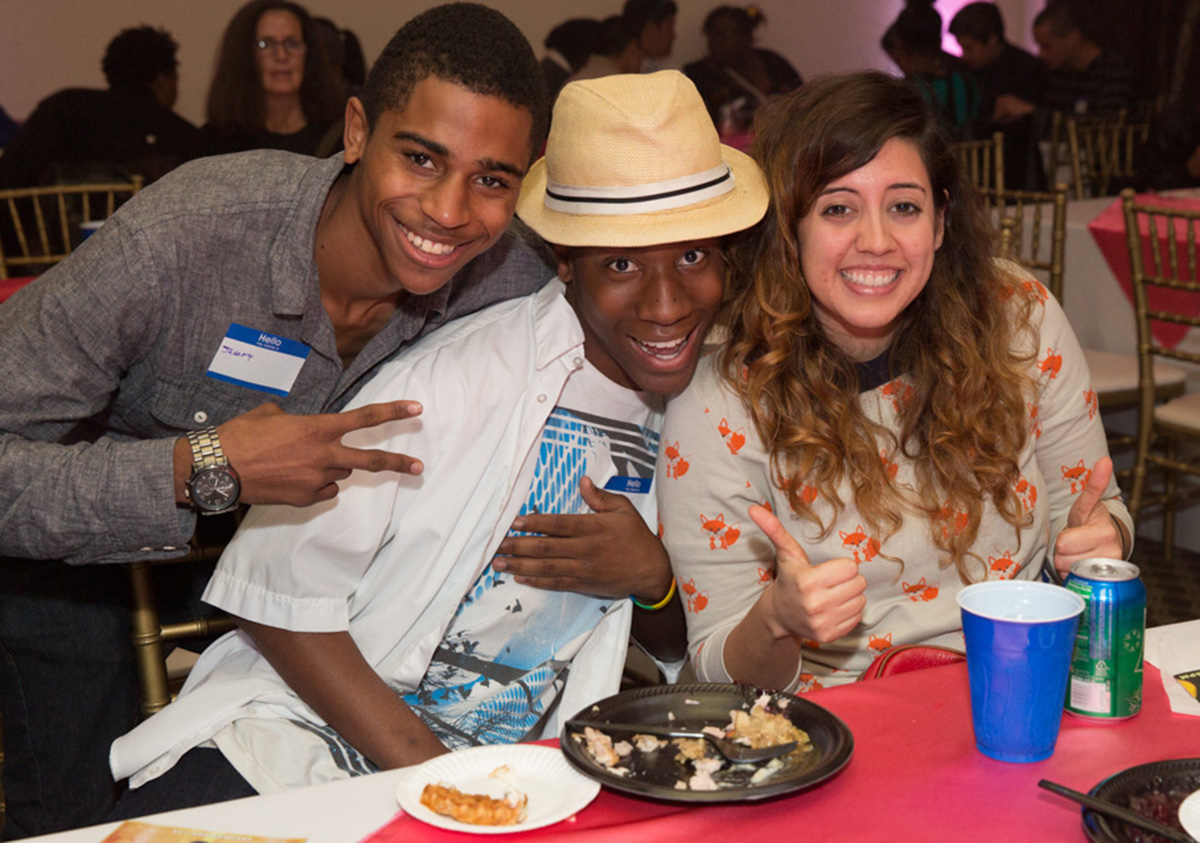
When Carlos Sosa first became involved in youth services and programming in the early 2000s, he was a young adult himself. And as he worked his way through the landscape of this world, of figuring out how to support disadvantaged young people, he noticed a glaring gap. “Trans youth weren’t being serviced,” Sosa told the Blade. “Lesbian youth weren’t being serviced.” Several LGBTQ+ adolescents were being left out of important pathways to resources, education, opportunities, and events that centered their joy.
In 2005, Sosa founded Community Intervention Through Youth (C.I.T.Y.) x1 Youth Group to make sure that queer youth were not only recognized but also prioritized when it came to their safety, rights, and futures. The nonprofit began with a simple ethos: “youth programming by the youth,” according to Sosa. For two decades, C.I.T.Y. has partnered with fellow organizations to support unhoused and at-risk queer youth, connecting them to services like transitional living programs and substance abuse treatment.
This Sunday, one of their regular holiday social events returns. The Tamale Wars, an annual free holiday dinner party, will bring food, music, dance, and actors from the charity Star Wars costuming organization 501st Legion to queer young Angelinos. Co-sponsored by the City of West Hollywood, Tamale Wars takes place on Dec. 7th from 6 to 9 p.m. at Plummer Park and is open to all queer youth ages 14 to 24, as well as allies and family members.
Sosa wants youth of all backgrounds to feel welcomed and embraced in this environment, especially those who have long been neglected in wider programming. Trans, unhoused, immigrant, and queer young folks will have access to a safe space where their whole selves are held and uplifted.
When the event first began, it was called the “Eggnog Youth Social.” But as time went on, the C.I.T.Y. team noticed waves of excitement that would follow revitalizations of the Star Wars franchise — how it delighted audiences, new and old. It was both nostalgic and forward-moving, and had the power to bring generations of families together. Their holiday social was then rebranded to “The Tamale Wars,” and has since taken on a life of its own, said Sosa.
These colorful, vibrant holiday dinners emphasize joy, but are also a way into other important resources. “As much as I’m talking about fun and Star Wars, there is an educational component at the end of the day for all of this,” said Sosa. “Once they’re in the door, we have tabling organizations that offer emergency housing, cash vouchers for the unhoused, GED training, and HIV testing.”
Facilitating queer youth’s access to essential services is the fundamental core of C.I.T.Y., especially as the state of youth programming comes under threat, both federally and locally. The administration’s 2026 budget consolidates several youth-focused initiatives, and opportunities like South Central L.A.’s workforce development program YouthBuild are at risk of significant cuts.
“The more things change, the more they stay the same — in that youth still need a voice in programming,” said Sosa. “Whenever there are budget cuts at the corporate level [and in] organizations, the youth programs tend to be the first that get cut. That was happening 20 years ago, and that’s still happening today.”
C.I.T.Y. is trying its best to adapt to these cycles in order to sustain its mission of helping queer youth thrive. The organization is ramping up outreach efforts, continuing to host events like the Tamale Wars, and continuing to deliver meals, hygiene kits, and other resources to encampments where queer immigrant youth are living. “We can’t swim against a wave because we will cease to exist,” said Sosa, who emphasizes the importance of community sustainment in keeping their mission alive.
Sunday’s Tamale Wars is free to attend for queer youth ages 14 to 24, as well as allies and family members. RSVP is encouraged but not required. More information can be found here. C.I.T.Y. x1 Youth Group is also asking for donations to help fund the holiday dinner as well as their meal drop off services and other initiatives.
Kristie Song is a California Local News Fellow placed with the Los Angeles Blade. The California Local News Fellowship is a state-funded initiative to support and strengthen local news reporting. Learn more about it at fellowships.journalism.berkeley.edu/cafellows.
Bars & Parties
LA Blade & Hyperion LA Studios partner with CinedPride Film Festival for the return of Queer Room, a free, entertainment industry mixer for the queer community
The three power partners join forces to present The Queer Room on Thursday, December 11th, starting at 6 pm at Hype Studios. The Queer Room focuses on members of any aspect of the entertainment industry.
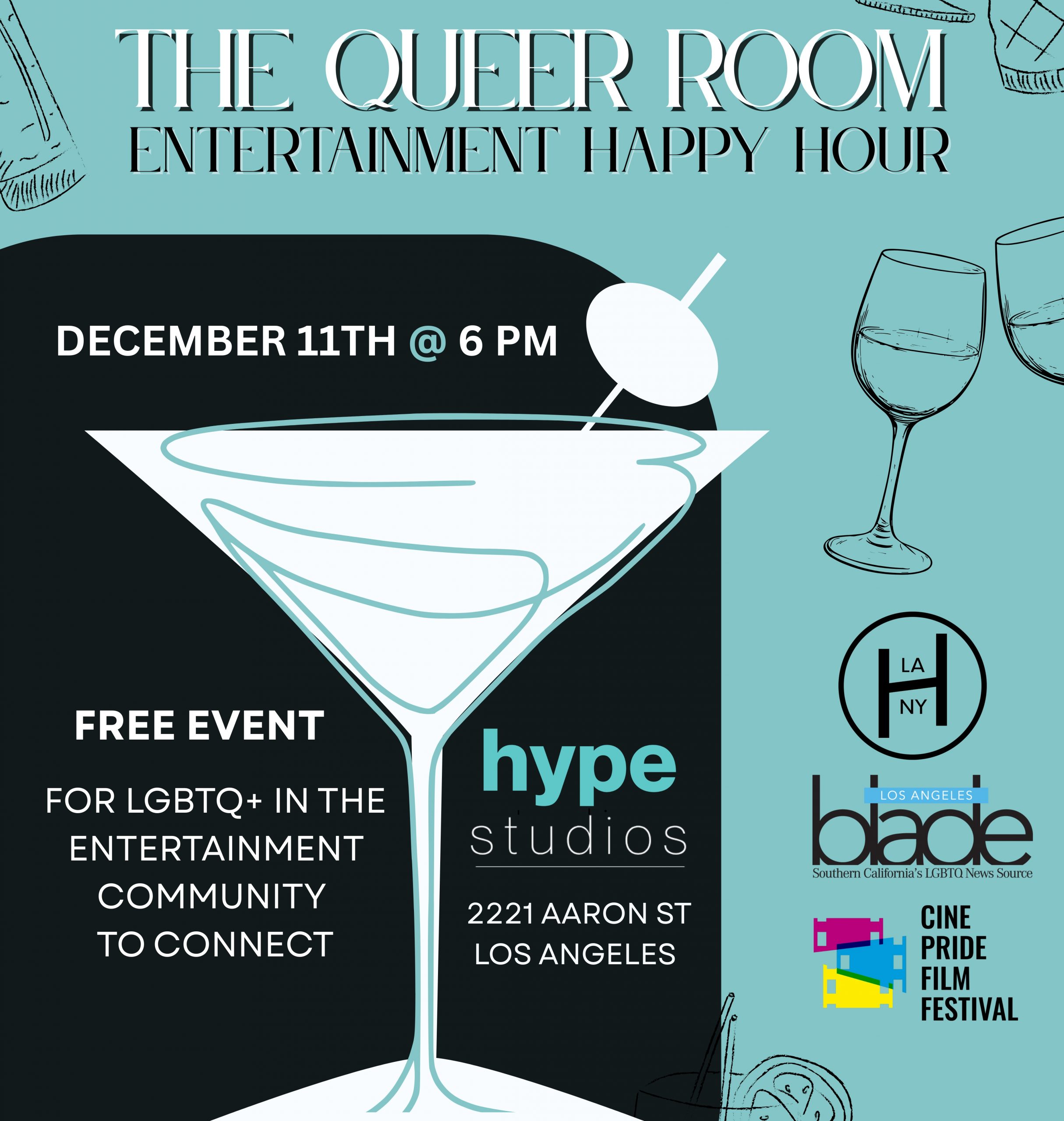
Are you a screenwriter? Entertainment critic? Film director? Actor? Makeup artist? Producer? Entertainment lawyer? Back by popular demand, The Queer Room returns to provide a vibrant and safe space for any and all members of the entertainment industry to mix, mingle, and network.
The Los Angeles Blade, Hyperion LA, and CinePride Film Festival invite you out for a casual happy hour at Hyperion Studios on Thursday, December 11th, starting at 6 pm. Bring your Instagram profile, your business cards, and your star personality for this entertainment-minded mixer. Come meet your future power partners in the industry. Now is the time for us to come together and become united.
Los Angeles Blade publisher Alexander Rodriguez will be on hand together with Andrew Bear, CEO and Founder of Hyperion LA, and Cecilio Asuncion, Executive Director of CinePride. Hyperion LA is a full-service creative production company specializing in story-forward campaigns for beauty, lifestyle, and culture-defining brands. CinePride Film Festival, at its heart, is committed to fostering the next generation of LGBTQIA+ filmmakers, ensuring they have the resources and support to bring their visions to life.
The first Queer Room, held at the Abbey, was a big success with attendees walking away with new contacts and business opportunities. This time around, we are heading to Hyperion Studios, an extensive and full-service production space, nestled in the heart of Los Angeles.
The event is open and free to all, hosted by Hyperion Studios at 2221 Aaron St, Los Angeles, CA 90026. Rideshare is encouraged.
For more information, email [email protected]
Events
“Still Standing” uplifts Black, queer voices in annual World AIDS Day event
This Saturday, B.L.A.C.Mail Productions will honor local advocates and bring HIV/AIDS resources to its community.
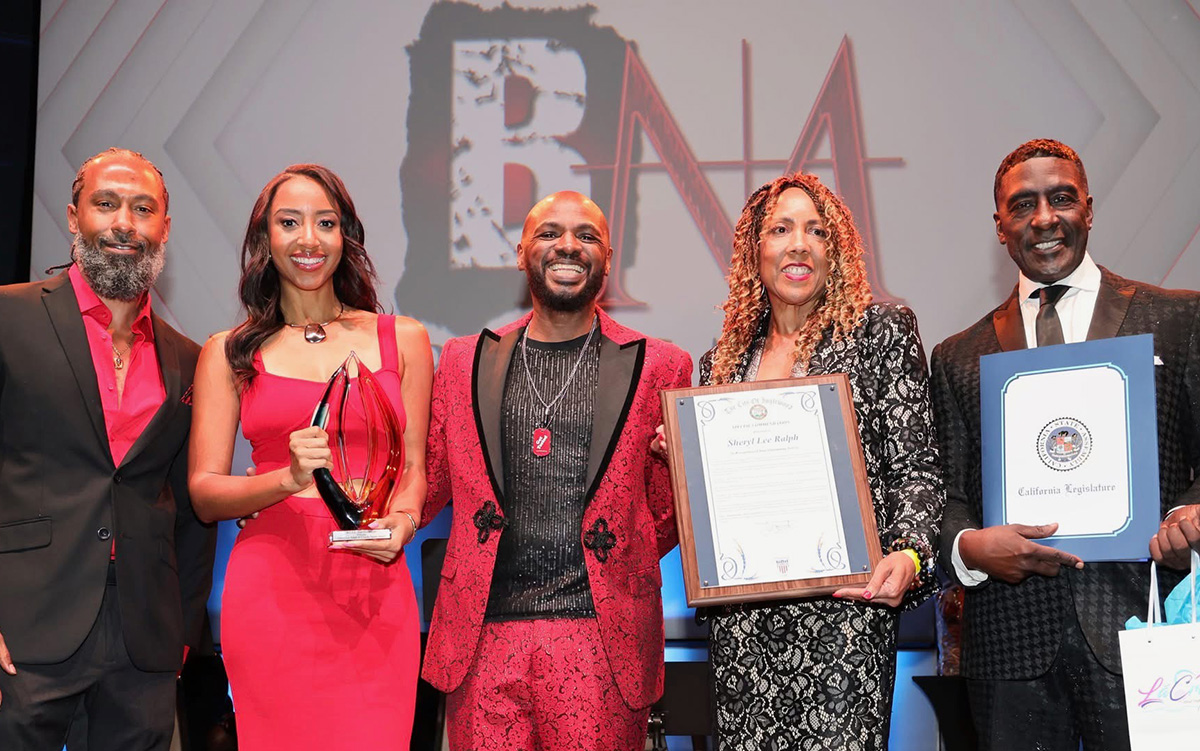
15 years ago, Spencer Collins organized trips for young students to attend various theater productions. As a former actor, he understood the power of the stage to channel complex truth into heartfelt entertainment. After one of these visits, a student approached him and asked why he, as a queer Black person, couldn’t see himself reflected in these shows. “You haven’t written them yet,” replied Collins.
This became the impetus for B.L.A.C.Mail Productions, a nonprofit that Collins founded in 2010 to uplift Black, LGBTQ+ voices. An acronym for “Black Leaders in Art and Cinema,” the organization supports the work of storytellers who are often sidelined. “It’s really become a movement,” Collins told the Blade. “And the movement is to make sure that we give voice to those who aren’t heard, [including] those who are in the LGBTQ community — who don’t have an opportunity to go and tell their stories.”
This Saturday, B.L.A.C.Mail Productions will host its 15th World AIDS Day Event, themed “Still Standing.” It features an energetic lineup of performances that includes singer Berkley the Artist and queer rollerskater LARONBEST, and will honor local advocates for their work in championing Black and queer stories and visibility. The event will also include free HIV rapid testing and other health resources for community members to engage with. “You’re going to come and laugh…party. But you’re going to be educated,” said Collins. “You’re going to get tested. You’re going to be tapped into resources. You’re going to rub shoulders with people who identify with you. You’re going to be in a safe space.”
Aside from providing concrete support to marginalized creatives, Collins knew early on that he wanted B.L.A.C.Mail Productions to platform the behind-the-scenes work being done to uplift conversations around HIV and AIDS. He had various guiding lights, including friends and mentors like Dontá Morrison, Greg Wilson, and Phil Wilson, Black community leaders and educators who were outspoken about HIV and AIDS activism. There was also actress Sheryl Lee Ralph’s DIVA Foundation, as well as the Black AIDS Institute, charitable organizations focused on HIV and AIDS policy, awareness, prevention, and treatment resources — especially when it comes to the lives of Black community members.
Black communities in the U.S. are disproportionately vulnerable to HIV infection, and were diagnosed with the virus at more than two times the rate of other populations in 2023, according to the Office of Minority Health. Collins was baffled that there was not more awareness and conversation around HIV and AIDS in his community, and became determined to champion Black and queer voices in broader conversations and awareness events around HIV and AIDS.
Collins emphasizes that Saturday’s event is focused on accessibility and that no one will be denied entry based on funds. After working in the nonprofit sector for decades, he has witnessed how large-scale events cultivate environments that encourage peers to be with one another, but exclude those with less means. Deciding who can be in attendance based on financial or social status defeats the purpose of awareness events to begin with, Collins explained. “That’s not fair,” he said. “You need to include them in the conversion so they can tell you what help they need…People need more resources, more testing [and] places they can go and feel comfortable to [talk about HIV and AIDS].”
Fighting for this kind of equitable access is difficult, Collins revealed to the Blade. Aside from stigma, perpetuated both federally and locally, Collins has faced difficulties in financially sustaining his organization. He self-funds a majority of his events and initiatives, and notes that a lack of funding for diverse organizations like his own creates a personal strain on him with each passing year. Five years ago, he was ready to end B.L.A.C.Mail’s annual World AIDS Day event. He felt at a standstill, having hit a wall that was built, brick by brick, through exhaustion. “My body is tired,” Collins said. “I’m physically and emotionally drained.”
Still, he is motivated by his mission to educate and empower his community. As he looks forward to Saturday’s event, the impending celebration of togetherness, education, and resource-sharing is a moment for resistance and resilience. Like the event’s theme, he is “still standing” — as strong as he can, to illustrate the power of Black and queer stories to express the depth of their histories and illuminate paths forward when larger forces fail to.
Ticket information for the 15th Annual World AIDS Day Event can be found here. B.L.A.C.Mail Productions is also raising funds to support Saturday’s celebrations; details can be found here.
Kristie Song is a California Local News Fellow placed with the Los Angeles Blade. The California Local News Fellowship is a state-funded initiative to support and strengthen local news reporting. Learn more about it at fellowships.journalism.berkeley.edu/cafellows.
a&e features
Drag queen Kennedy Davenport dishes on her new comedy special
The RuPaul’s Drag Race alumni on The Kennedy Davenport Center Honors and how she chooses to stay positive amidst so much hate.
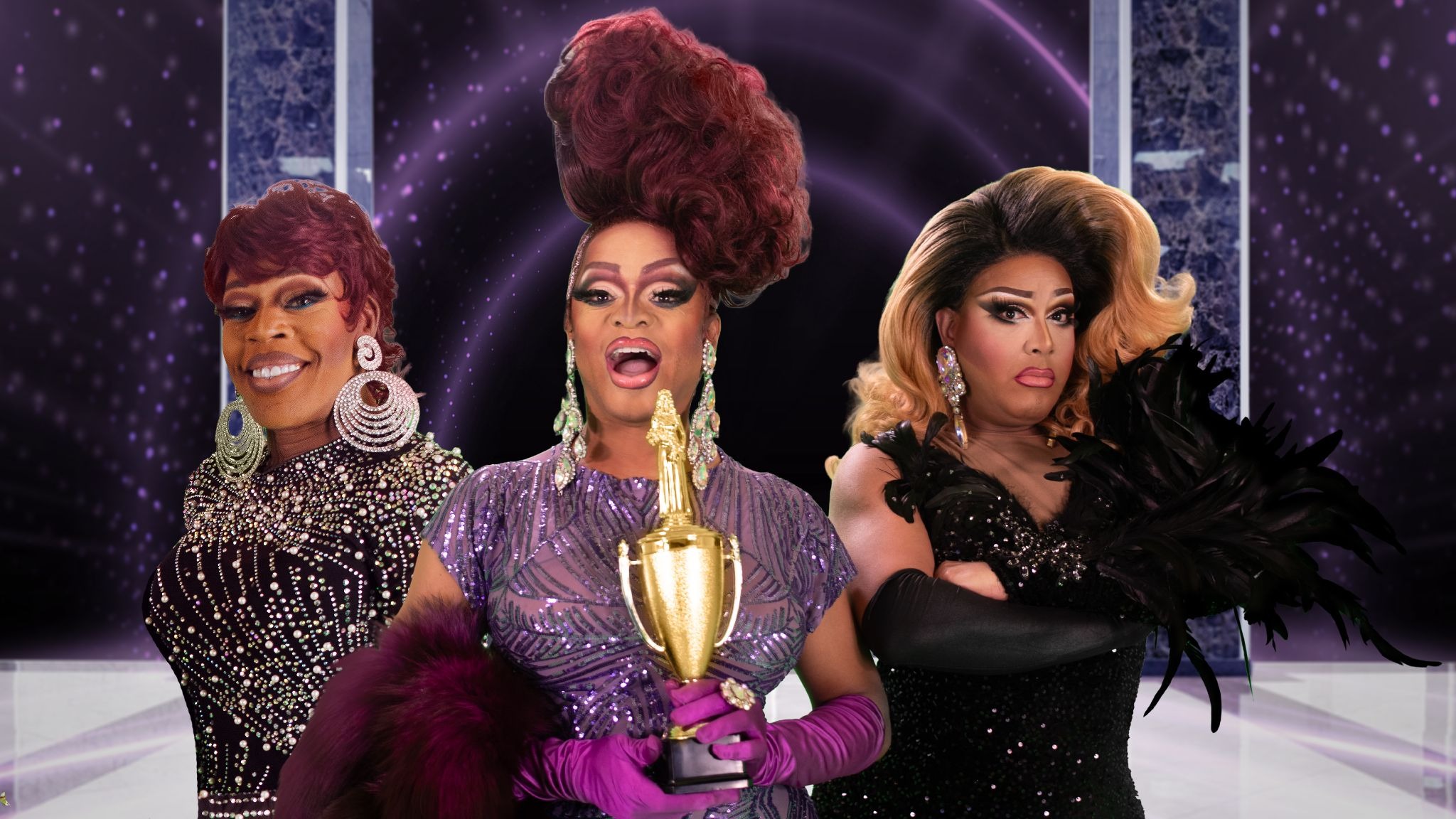
While RuPaul’s Drag Race is filled with legendary queens, few have had as much of a cultural impact as Dallas’ very own Kennedy Davenport. Originally from this seminal program’s seventh season, the performer became an instant fan-favorite with her endless stream of quotable catchphrases and jaw-dropping dance ability. With follow-up appearances on All Stars and Versus The World, Kennedy has solidified herself as one of the biggest icons to come from this franchise. And, finally, World of Wonder is giving her the solo spotlight she deserves with a new special, unlike anything the production company has done before: The Kennedy Davenport Center Honors.
“It’s different, and that’s why I wanted to do it!” Said Davenport, when she sat down with the Los Angeles Blade to discuss what drew her to this new special. “I’m a host by nature — and coming up in the Drag Community, you have to know how to hold a mic.”
The Kennedy Davenport Center Honors will see the queen bestow awards — or, as she calls them, ‘dishonors’ — to various Drag Race alumni. From “Proud Drag Mother Award – When Your Daughter Has A Higher Booking Fee” to “The Struggle is Real Award,” Kennedy was excited to share the stage with some of her favorite Drag sisters and completely gag them with these hilarious new titles. Whether it be recent icon Bosco or long-lasting legends like Alexis Mateo, she assures everyone reading that this VIP list will be one of WowPresentsPlus’ most stacked yet. But beyond the comically star-studded glamour, Kennedy knew that she wanted her first special to be something more than just an award show. She wanted to use this time to uplift and celebrate the Drag community that she loves so much — a practice that queer people have been missing in recent months, but that this Queen does in her life every single day.
“[I’m positive] on a daily basis,” Kennedy explained, when discussing the optimistic attitude she embodies as a host. “I always highlight positivity. And, you know, it’s cliché to say…but I really don’t think about the negative. In my life, or in my career.” It’s a part of the performer that fans don’t often get to see; between the verbal takedowns and stunning lip-syncs, Drag Race watchers can miss how Kennedy is constantly supporting everyone around her.
When discussing how she manages to stay so hopeful, especially when coming from a state filled with anti-LGBTQ+ rhetoric, Kennedy clarified, “It’s a very conscious thing. You have to be aware of what you are putting into the universe, and what you are allowing into your personal space.” She continued, “It’s easy for me to do [this] because I’ve been down at the bottom [of life]. I’ve [also] been at the top, but the bottom is where you really start learning life and start making up your mind about wanting to live positively.”
“I’m going to see my dream, I’m going to see my purpose. I’m going to encourage others and motivate them to be their authentic selves — and I’m going to respect myself along the way so that I can continue to be respected and loved by [everyone around me.]” It’s a radically optimistic mindset that audiences don’t often get to see through the television screen. And it’s one that Kennedy knows her fans can benefit from, now more than ever.
During a time when LGBTQ+ communities — especially drag queens, who are go-to scapegoats for conservative fearmongers — are being attacked at a daunting scale, it’s becoming harder and harder to find moments of pure queer joy in America. It’s understandable that so many are focused on pushing for change in all arenas of this country, but we can’t forget how essential community is in the ongoing fight for liberation. It’s good to remember that in the face of discriminatory rhetoric, LGBTQ+ joy is a radical act, which is why Kennedy is hoping that this special will give viewers something they haven’t had in far too long: a moment to relax.
“It’s all [done] in love, and that’s the message that I really want people to see, that,” said Davenport, when discussing how excited she is to not only poke fun at her fellow performers, but spotlight their many accomplishments. “It’s a ‘dishonors,’ but we all love them, and everybody that I call out [in the special] knows that it’s done in love.” By bringing viewers into her close relationships with everyone involved, Kennedy is inviting them to laugh at the inside jokes she’s developed over years of knowing these stars. It’s the most exciting part of the entire endeavor for the Queen, saying, “I’ve always lived with the heart of love and laughter. So, to have this platform, to be able to spread love…it’s a blessing in disguise.” This interview quickly turned from a spotlight on a funny special into a profile on a Drag Queen who has helped so many over the years. It’s all a part of Kennedy Davenport’s ongoing mission to spread her personal mindset of love and life to everyone she meets, with The Kennedy Davenport Center Honors becoming her latest and biggest attempt at uplifting the many people in her community. This is why, as the interview came to an end, Kennedy clarified her true goal with this special: “At the end of the day, I just want you to be sitting back laughing and saying, ‘That made me sick!’ She talked about me, and I loved it.”
The Kennedy Davenport Center Honors premieres December 7th on WOW Presents Plus
a&e features
Exploring a different side of Los Angeles influencer Javonte Rose
This author, advocate, and model discusses the hard journey that brought him where he is today.

While online followers will think many things when they first lay their eyes on Javonte Rose, there’s one word that will come to many of their minds: perfection.
This LA-based model and musician has spent the last few years occupying people’s timelines with a perfectly curated social media presence. It’s what led to his casting on hit queer web series like WowPresentsPlus’ Vanjie: 24 Hours of Love, where fans came to know him for his effortlessly suave confidence. Javonte’s brand is built on this form of pure queer excellence — but it definitely didn’t start that way. Because, despite what it may seem to his thousands of Instagram followers, Javonte’s life story is one of hardship and tireless work, facing some of the worst situations imaginable and refusing to let them break you. It’s an aspect of the influencer that your average follower wouldn’t get to learn about, and it’s an experience that he hopes to share with the many people going through the same turmoil he did today.
Initially, Javonte sat down with the Blade to discuss his part in OUTtv’s recent reality series Slayers: Wheel of Fate. Hosted by the legendary Tiffany ‘New York’ Pollard, Javonte was thrilled to be a part of this all-queer competition show. “I had an amazing time,” he gushed. “And just being in a house with so many different individuals who you don’t know and coming together…it brought me back to childhood. [I got] to be very smart and strategic — playing it cute and playing it safe!” He laughed about the intensity of this program, yet what began as a fun conversation about reality TV quickly became an insightful discussion about healing from trauma, all because of one question: what made you who you are today?
Of course, every influencer has a past, one that reveals a deeper side to the flawless image projected to their online audiences. But few backstories are as shocking as Javonte Rose’s, with the man starting his explanation with a distressing statement: “I’ve been on my own since I was 15 years old.”
“Growing up was such a struggle for me,” he continued. “[My siblings and I] were split up as kids, because my mom was going through a lot…she had her first kid at 13, and so she was trying to be a mom and a teenager at the same time. So we were all split up, and I moved in with my aunt — it was a big difference.” Javonte’s eyes literally lit up when speaking about his aunt; for the first time in his life, it felt like he actually had a parent. “My aunt was the one who taught me how to love and respect and appreciate people…she treated me with love and respect, and loyalty and guidance, and the motherhood my mom didn’t have [any of].” While he spent a relatively short time with the woman, Javonte emphasized how dearly he loves his aunt and the sense of family that she instilled in him. He’d finally received the love he hadn’t had from his birth mom, which is why it was particularly devastating when, after only a few years with his aunt, his mother regained custody of her children.
Returning to his immediate family set off a decade of torment for Javonte. “I was being bullied by kids in school, then going back home [and] being bullied by my siblings and verbally [abused] by my mom and her boyfriend.” This experience went on well into his teens, forcing him to start working at only 12 years old while enduring homophobic harassment at home and in school. These years of abuse culminated in the horrific experience of his mom calling the police on him when he was only 15 years old.
“Your mother putting you in jail for something you didn’t do is [heartbreaking],” said Javonte, detailing the day when, after attacking him physically when he tried to leave their home to go to work, his mother called the police and alleged that he was the one attacking her. “Feeling those handcuffs…knowing she’s behind you watching it happen…” The artist described the feeling of having the person meant to protect you turn into the source of your worst trauma. It was a terrifying moment that led to his younger self moving to Boston, where he began the modeling career that brought him to where most people know him today.
“People always [see me as] this beautiful man. ‘Wow, he does modeling, acting, he’s on television…how can he go through such struggles and trauma?” It’s a misconception that Javonte has always experienced, but it’s luckily given him a platform that he uses to hopefully make sure nobody goes through the same experience he did.
While many people know Javonte for his reality TV appearances and catchy songs, the man has also spent years as one of Los Angeles’ most fashionable activists. Not only has he documented his tumultuous childhood in a memoir, Behind the Blue Eyes, but in 2016, he started his own anti-bullying nonprofit, I’m Here. He was able to turn a lifetime of tragedy into a mission to support others with a ceaseless confidence that he credits to one person: his aunt. “I always stood my ground because my aunt always told me to keep my head high and smile no matter what. I just kept looking at myself in the mirror and [telling myself], ‘You are amazing, you are beautiful, you are strong, you are powerful.’”
Javonte’s story shows how even just one supportive person can impact someone’s entire life. And, through the man’s ability to turn so much early anguish into the easy image of perfection he has now, it also speaks to the importance of valuing yourself even when everyone around you tries to make you feel lesser. Because Javonte wouldn’t have accomplished any of his wildly impressive resume without believing that he had a story to tell. And, as he ended the interview, the advocate advised his many fans, “Find a safe place…and write. Write the things that you’re going through, things that you want to change, and things that you want to see in your life. Try to think of the beautiful life moments [you’ve had], and try to think of the beautiful life moments that [you will] have. And just try to keep uplifting yourself through it all.”
Tarot Readings and Astrology
December is a time for reflection, celebration, and tying up loose karmic threads in Intuitive Shana’s December tarot reading
The cards are encouraging us to look at the past and take note of the outside influences, both good and bad, that have shaped situations for us as well as shaping our behaviors and reactions.
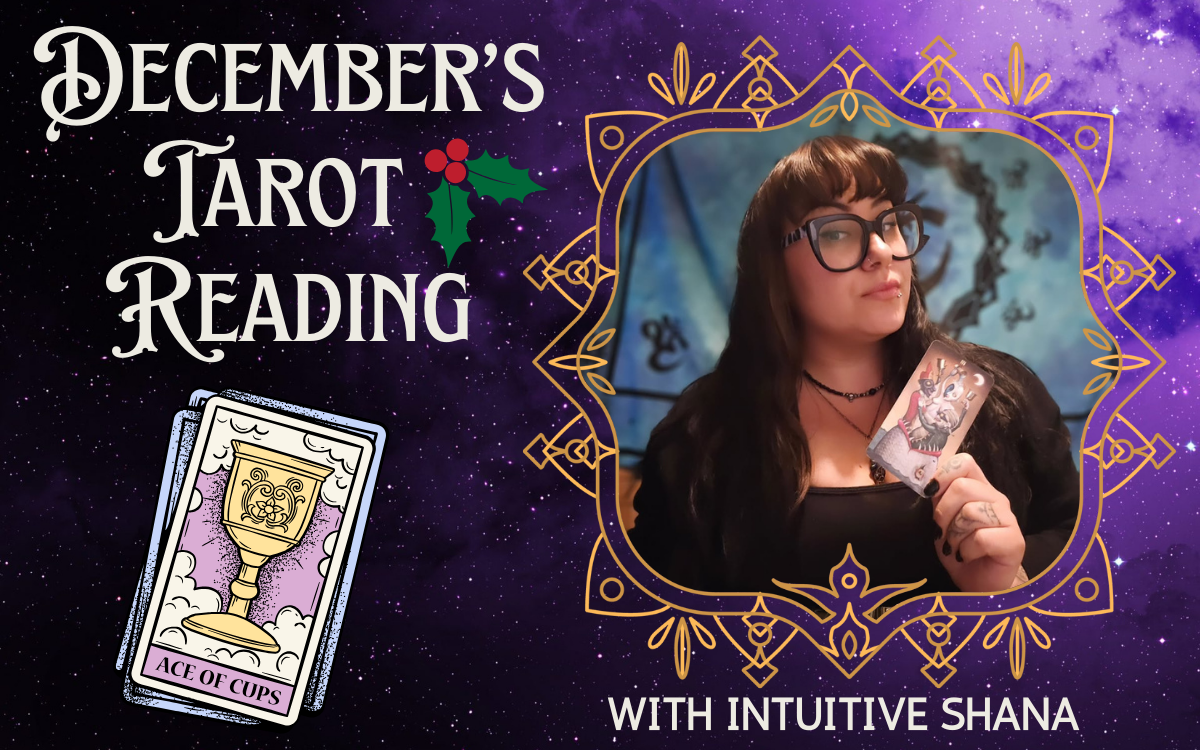
Happy holidays, my lovelies and my ho-ho-hos! December is here, we have approached the final month of the year, which means it’s time for reflection, celebration, and tying up loose karmic threads so that we can walk into 2026 with no strings attached. What does that look like? Let’s ask the tarot cards and find out.
With us wrapping up the year, we tend to set goals for the year ahead, but let’s make sure that we are looking at the year behind us and use the lessons and experiences from it to help shape our goals and plans accordingly. The cards are encouraging us to look at the past and take note of the outside influences, both good and bad, that have shaped situations for us as well as shaping our behaviors and reactions. Who got in your way? Who pushed you to be your best self? Pay close attention to where there was disharmony and discord, and ask yourself what you did in response to those situations. Did you stay put even though it wasn’t the best fit for you? If that’s the case, figure out why… there’s more to come with us being challenged with toxicity ahead, and we need to understand our motivations, and know when it is our ego talking instead of our authentic selves. Reflection often brings clarity and shines light on newfound wisdom. Do not deprive yourself of that this month.
December is reminding us to be creative with our expressions of love and celebration. Yes, it’s the season of giving, but that doesn’t necessarily mean giving gifts that break our bank. Engage with others through shared experience and stimulate each other’s minds and passions. I know that may sound cliché, but time spent with someone may amount to something monumental for them. I see that a lot of people will be struggling with depression and anxiety over this month, and having a safe space with friends may be the best ( and most genuine) gift they could receive. This year has challenged all of us on so many levels, putting aside the superficial holiday junk, and just simply showing up will pack more joy and meaning than anything that could be gift wrapped.
There is an air of ingenuity going around this month, and it is leaving a lot of folks inspired. We are feeling called to rebrand, refurnish, and rebirth ourselves. Start making these plans and decide how you will carry them out in the new year. Be mindful that this task may not be as easy as it sounds. Those of us who are sticking to this commitment may be surprised to find that the resources we thought we had are in fact not there. Not to worry, this doesn’t mean we are being left high and dry; it means that we will be finding ourselves having to start from within, and as we go along with the transformation, outside help will arrive. Like building a drag or burlesque costume on a budget, we often have to start with what is in our own closet as we develop our act.
With New Year’s on our heels, I thought now would be the perfect time to sprinkle some spell work in so that we can all embrace our inner magic. Lucky charms aren’t just the dyed rabbit’s foot we all had on a key chain as a child (p.s. If you had one as a kid, you’re probably a witch now.) In witchcraft, a lucky charm comes in a variety of shapes and sizes and is a token that we enchant to carry out a specific wish or simply bring us good luck.
You will need three things for this spell:
- An inconspicuous item that you will be enchanting. Like a piece of jewelry or a small token that can be carried in your pocket or wallet.
- Your intention. Decide what energy this charm will bring you. Will it bring you good luck? Make you a money magnet? Are you swimming in sex appeal? The options are endless, but choose one and get as specific as you can. Bonus points if you can think of a visual to go along with it. For example, whenever I do a money spell for myself, I always conjure an image of me rolling around in a mountain of cash.
- A New Year’s Eve party! It can be a huge bash or something more intimate; the key is that we have jovial and celebratory energy at midnight that we can use to enchant our charm.
Start by cleansing the item you have chosen to be your lucky charm by passing it through incense smoke. The smoke can be from an herbal bundle or a stick of incense. Tuck it away in your pocket and take it with you to the NYE party. Once the clock begins to count down to midnight, grab your item in your dominant hand and begin to think about your intention.
Imagine yourself carrying out the specific actions that correspond with this intention, or picture the visual we discussed earlier. Take this image from your mind and send it all to your charm. When the clock strikes midnight, hoist the charm in the air as you cheer out “Happy New Year” and allow it to capture all of the celebratory energy from the cheers and party around you. Slip the charm back into your pocket and know that you have created a totem of luck and happiness to carry with you throughout the year.
Shana is an initiated priestess, paranormal investigator, author, and host of the podcast Queer from the Other Side. Follow Shana on IG.
a&e features
Jonathan Bennett: making ‘Finding Mr. Christmas’ Season 2 with heart, and telling gay love stories for broad audiences
The Mean Girls star dishes on looking for the next Broadway role and how Hallmark has supported queer storytelling
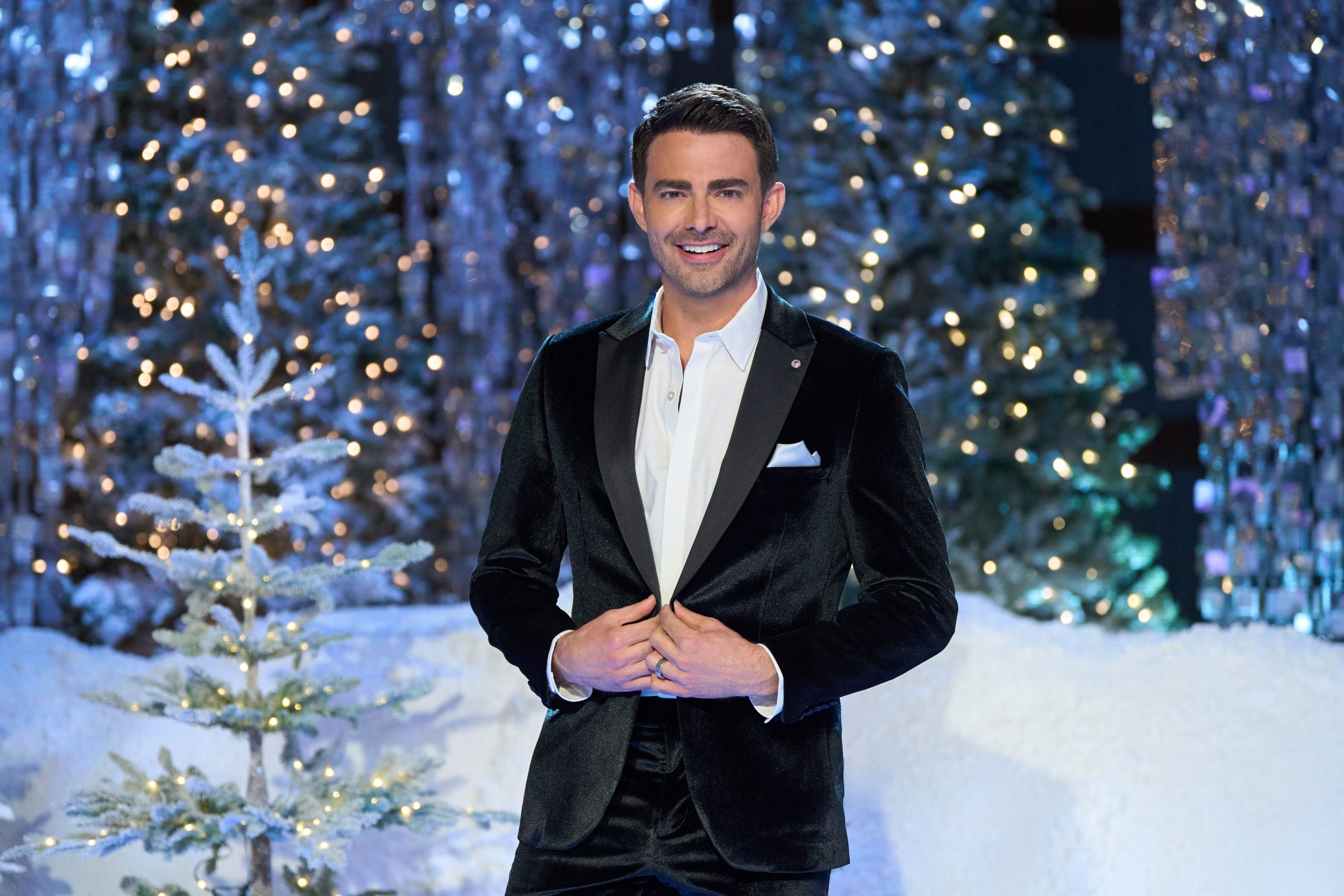
Jonathan Bennett believes there are two kinds of people in the world — those who love Hallmark movies and liars. And in Season 2 of Finding Mr. Christmas, which the Mean Girls star co-created with Ben Roy, Bennett is searching for Hallmark’s next leading man.
“It’s so fun for people because everyone in their life has someone they know that they think should be in Hallmark movies, right? The UPS driver, the barista at the coffee shop, the dentist,” Bennett says. “So we’re testing their acting abilities, we’re testing who they are, but we’re also looking for that star quality — the thing that makes them shine above everyone else. It’s almost something you can’t explain, but we know it when we see it.”
Season 2’s cast includes a former NFL player for the Green Bay Packers, a few actors, and a realtor. The 10 men compete in weekly festive-themed acting challenges, one of which included having to ride a horse and act out a scene with Alison Sweeney. The contestants were chosen from a crop of 360 potential men, and Bennett gives kudos to the show’s Emmy-nominated casting director, Lindsay Liles (The Bachelor, Bachelor in Paradise).
“She has a tough job because she has to find 10 guys that are going to be good reality television, but also have the talent to act, carry a scene, and lead a Hallmark movie eventually,” he says. To be the right fit for a Hallmark leading man, Bennett singles out five key characteristics: you have to be funny, charming, kind, have a sense of humor, and you have to do it all with a big heart.
Of course, Finding Mr. Christmas wouldn’t be Finding Mr. Christmas without its signature eye candy — something Bennett describes as “part of the job” for the contestants. “I can’t believe Hallmark let me get away with this. I dressed them as sexy reindeer and put them in harnesses attached to a cable 30 feet in the air, and they had to do a sexy reindeer photo shoot challenge,” he says with a laugh. “This season is just bigger and bolder than last. People are responding to not only all the craziness that we put them through, but also comparing and contrasting the guys in their acting scenes when we do them back-to-back.”
Season 1 winner Ezra Moreland’s career has been an early testament to the show’s success at finding rising talent. On seeing the show’s first winner flourish, Bennett says, “Now to watch him out in the world, just booking commercial after commercial and shining as an actor and a model, I think the show gave him the wings to do that. He learned so much about himself, and he took all that into his future auditions and casting. He just works nonstop. I’ve never seen an actor book more commercials and modeling gigs in my life.”
Bennett has been a star of plenty of Hallmark movies himself, including the GLAAD-award-winning The Groomsmen: Second Chances, which makes him a fitting host. Among those movies are 2020’s Christmas House, which featured the first same-sex kiss on the network and had a major impact on Bennett’s career as an openly gay man. “Hallmark’s been so great about supporting me in queer storytelling. But again, I don’t make gay movies for gay audiences. I make gay love stories for a broad audience, and that’s a huge difference, right? We’re not telling stories inside baseball that only the gay community will understand.”
He continues, “The backdrop of a Hallmark Christmas movie is very familiar to these people who watch. And so when you tell a gay love story, and you tell it no differently than a straight love story in that space, they’re able to understand. It’s able to change hearts and minds for people who might not have it in their lives.”
While Hallmark has become a major staple of Bennett’s career, he started off wanting to be a Broadway actor. And before the first season of Finding Mr. Christmas aired, Bennett took a break from TV to make his Broadway debut in Spamalot, replacing Michael Urie as Sir Robin and starring alongside Ethan Slater and Alex Brightman.
“That was my dream since I was five years old – then I booked a movie called Mean Girls, and everything kind of changes in your life. You no longer become a person pursuing Broadway, you become a part of pop culture,” Bennett recalls. “And to be honest, when I hit 40, I was like, ‘I’m probably never going to get to live that dream.’ And that’s okay, because I got to do other dreams and other things that were just as cool but different. So I honestly never thought it would happen.”
Bennett is still determined to make his way back on Broadway with the right role — he calls Spamalot the “best experience” of his life, after all — but he’s got another Hallmark show lined up with Murder Mystery House, which he co-created. The show was recently greenlit for development and intends to bring the Hallmark mystery movie to life. “It’s kind of like our version of The Traitors,” Bennett admits.
Looking back on both seasons, Bennett says that what makes Finding Mr. Christmas stand out in the overcrowded reality TV landscape is that everyone involved makes it with heart: “This isn’t a show where you’re going to watch people throw drinks in each other’s faces and get into big fights. The thing that has amazed me so much about this show, the more we’ve done it, is that every season, 10 guys come in as competitors, but they leave as a family and as brothers. That’s something you don’t get on any other network.”
Finding Mr. Christmas airs every Monday on Hallmark through December 20, with episodes available to stream on Hallmark+.
a&e features
Nia DaCosta and Tessa Thompson on the vital queer chaos of ‘Hedda’
The director and star of the sapphic thriller offer a new vision for what LGBTQ+ representation can be
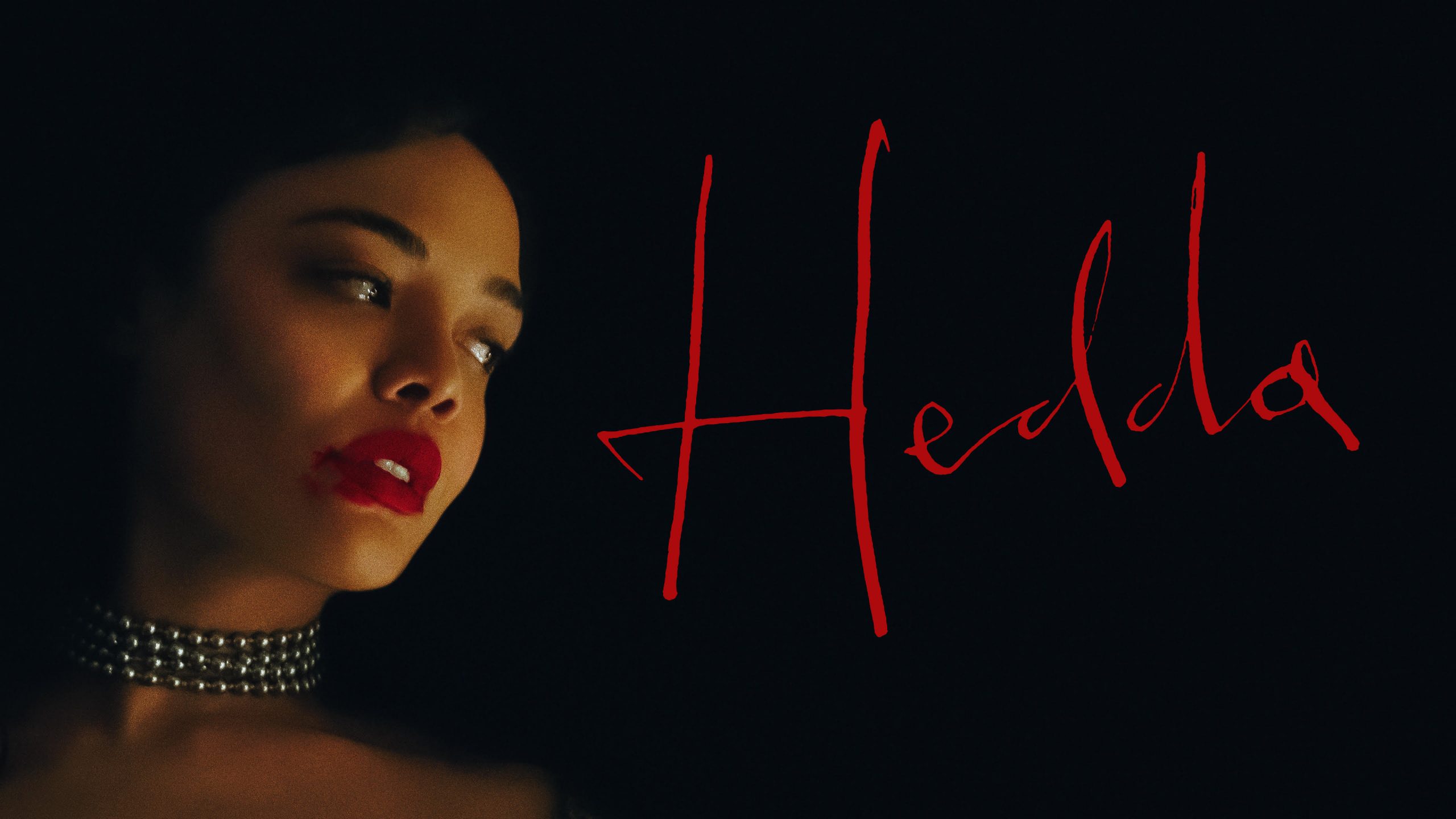
No matter how much hateful rhetoric tries to silence LGBTQ+ communities, queer people will always fight tirelessly to ensure our stories are told. This is shown prominently in film and television; modern viewers are lucky to have an ample library of queer media to choose from. That’s not to say there haven’t been serious losses in this area, with organizations like GLAAD documenting how the rise in hateful rhetoric has exacerbated existing attempts to ban these important pieces of media. But whether it be in the cinema or online, marginalized creators continue pushing to have their projects be created today — and absolutely none of these creations are as deliciously diabolical as Hedda.
An adaptation of Henrik Ibsen’s classic play, this story follows the titular housewife as she deftly manipulates anyone unfortunate enough to get caught in her orbit. Taking place over the course of a raucous house party, the 2025 version of this 1891 tale sees our ‘protagonist’ square off against 1800s gender norms, her inept husband, and the sudden re-emergence of her ex-girlfriend. Along with its jaw-dropping story of betrayal and intrigue, this complex adaptation seamlessly weaves various identities into a narrative that has been celebrated for more than 100 years. It effortlessly intertwines these historic themes with aspects of queerness and racism that audiences will know well, not only creating the best Hedda adaptation yet, but innovating what LGBTQ+ representation can look like today.
As someone renowned for injecting legendary franchises with much-needed nuance, Nia DaCosta knew how important it was to bring representation to Hedda — despite many people advising her against it. “[Speaking] as a Black woman, when you are not a white dude, your identity becomes a ‘complication,’” said the director, when discussing with the Blade what pushed her to translate this typically white, heterosexual character into a queer woman of color. “Something I get asked a lot is, ‘Oh, well Hedda is Black and queer — don’t you feel like that’s stacking too much on top of the film?’ And I respond, ‘Who you are is not too much.’”
It’s a sentiment that the film’s star, Tessa Thompson, completely resonated with. She shared with the Blade, “I think there is something so powerful about queerness [becoming] textural inside of a narrative,” raved the star, whose filmography is filled with projects like Dear White People and Passing that interrogate what true representation looks like in modern society. “Where we get to sort of normalize that and say this is a huge part of our identity, but it isn’t everything about us,” she continued. “Frankly, I wish that more filmmakers thought about that when they’re conceiving characters.”
It’s a conversation that has gone on for years among queer cinephiles: what is representation by and for LGBTQ+ audiences, and what is teaching non-queer viewers that gay people are also human beings? While it is (unfortunately) still essential for movies to perform this kind of education, it’s led to many projects offering a digestible image of queerness that doesn’t actually reflect the experiences of queer people watching. This kind of portrayal has led to studios utilizing diverse identities as gimmicks, ‘complications’ in the narrative that must be maneuvered around rather than vital aspects of nuanced characters. It’s a harmful trend of hollow representation, and it’s one that Hedda combats in every single scene.
“[Hedda is] canonical material that’s been celebrated for centuries,” Thompson explained. “Obviously, that wasn’t from a queer perspective, wasn’t from the perspective of folks of color…and I think, in a way, what we’re trying to say is that our stories also should be canonical.” By using a story that has existed for so long and effortlessly imbuing themes of queerness and racism into it, this creative team showcased how identity doesn’t have to simply be a narrative ‘hook.’ Rather, by recognizing that these significant identities contribute to the larger personality of a character, it adds impressive complexity to make the story even more entertaining to watch. Thompson’s character is a devilish (if not outright evil) anti-hero who champions her intersectional identities while not performatively explaining to audiences the anguish of being a queer Black woman in the 1800s. This allows her many intricacies to truly shine, with the film refusing to reduce Hedda to the discriminations these identities could solicit and instead using them to further flesh out an already intoxicating character.
Nia DaCosta is an expert at weaving diverse identities into stories not specifically focused on those identities (often to the outcry of conservative audiences). “You can’t think of identity as a complication,” she said, detailing how, whether it was Hedda or her foray into superhero cinema with The Marvels, she’s been alarmed at how reluctant so many filmmakers are to center marginalized identities in stories that aren’t about marginalized pain. “Don’t let anyone else tell you that it’s a complication or that it’s gonna make it too confusing or too complex. It’s not true, because we’re all valid, and we all deserve to be at the center of a story.”
By showing not only how easily such a classic tale can be revised with diverse themes but also how greatly improved it can be by them, DaCosta highlights how easily true representation can be accomplished today. Representation that doesn’t tokenize queer individuals or refuse to allow them outside of stories focused on the pains of being queer. Through her ideation and Thompson’s acting, she innovates cinema by offering a truly multi-dimensional portrayal of a queer person of color whose identity isn’t a complication or narrative tactic. And, when asked what she hopes for intersectional stories like this going forward, the Director ended the interview by saying plainly, “I want to see more of them.”
“There’s room for us in every kind of genre, every kind of storytelling. And we’re slowly cranking in that direction, but I think it’s a fight we have to keep having, and we have to keep being forceful about it, and we have to keep showing up in these spaces and planting our feet. That’s what I hope to see more people [doing]…coming in and planting their feet.”
a&e features
Jason Caceres is the rising talent you can’t look away from – not that you’d want to
With three OUTtv series, festival awards, and charismatic energy, Caceres is becoming one of queer media’s most versatile characters
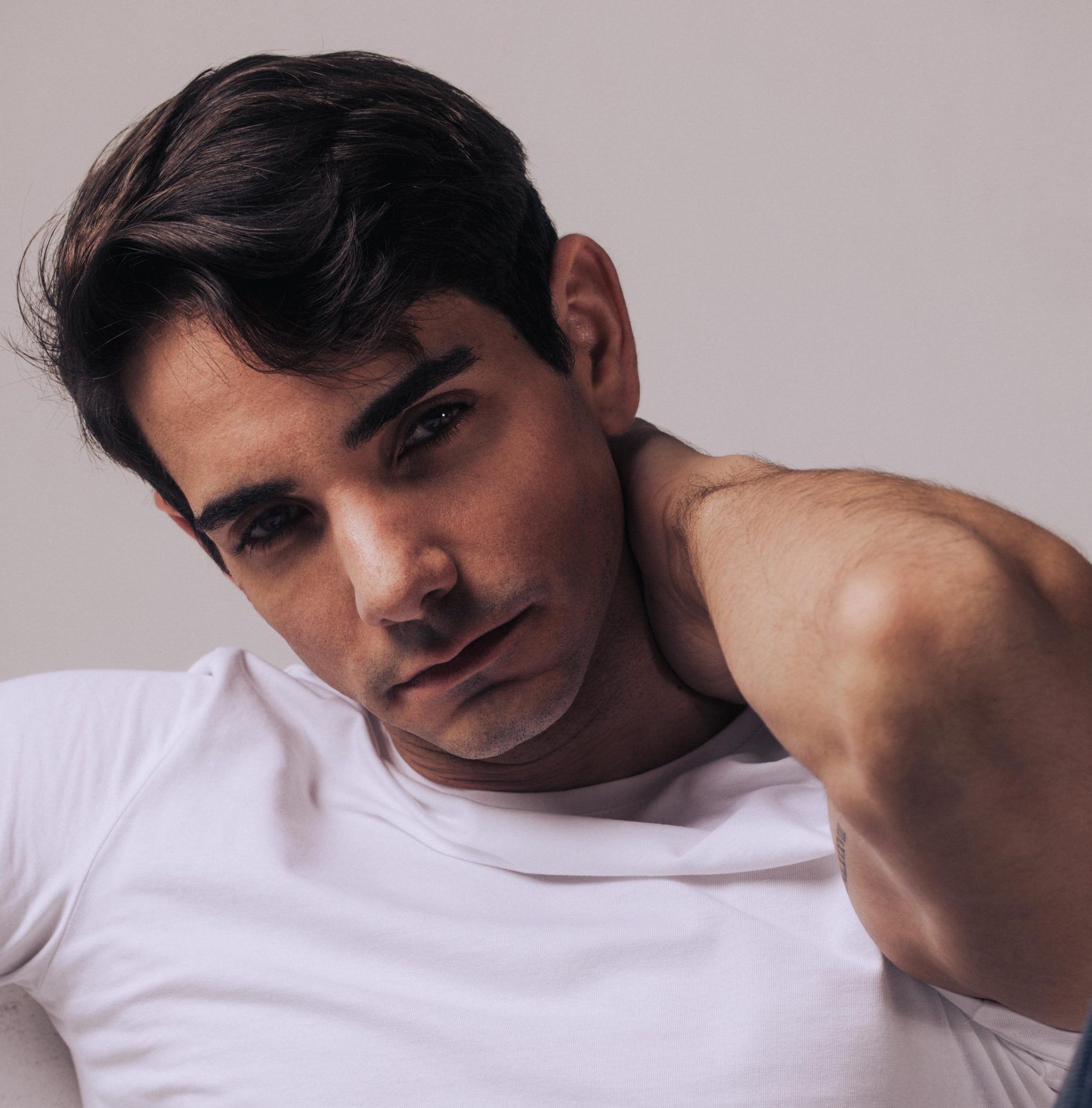
For actor Jason Caceres, the past few years have marked an intentional rise – one defined by a commitment to queer storytelling, a love of comedy, and a layered understanding of what representation in media means. With roles across multiple OUTtv series, including Boy Culture: Generation X, Open To It, and the upcoming Laid Bare, Caceres has become one of the network’s most recognizable and versatile emerging voices. He’s the kind of actor who can get a laugh with nothing more than an eye-roll, a perfectly timed one-liner, or a hair color choice that probably deserves its own content advisory.
Born and raised in Miami to Cuban immigrant parents, Caceres grew up straddling two cultural worlds. This duality informs the emotional sensitivity he brings to his characters. “At home, I spoke Spanish, watched Telenovelas, ate croquettas and bocaditos,” he explains. “At school, I spoke English and ate mashed potatoes and mac and cheese. It helped broaden my horizons…”
To have grown up at this intersection, he says, is precisely what allows him to tap into a range of emotional registers on screen. “It’s given me a sense of empathy that I’m not sure I would’ve had otherwise.” That empathy is evident across his work, whether he’s leaning into camp absurdity or finding solitude in the quieter, more vulnerable scenes.
Caceres’s visibility extends well beyond television. He’s quickly becoming a fixture on the festival circuit, most notably at Cinema Diverse, the Palm Springs LGBTQ+ Film Festival, where he appeared in five programs this past year – an impressive feat even for longtime regulars. “As an openly queer artist, it’s always heartwarming to be received so well by my own community,” he tells the Blade. His long-standing relationship with the festival reflects not only local enthusiasm but also the deep resonance of his work with queer audiences seeking media that affirms their personal experiences and stories.
Still, it’s his turn as Princeton Martinez on Open To It that has captured the widest attention. Caceres’s portrayal is sassy and chaotic, yet he still manages to pull the character into unexpectedly vulnerable territory – a balance he intentionally cultivated when returning for Season 2. “Princeton has seen a lot of growth since the first season,” he says. “Season 2 sees Princeton struggle to grow into himself. We see heartbreak, we see insecurity, we see doubt, and we see love.”
One of the season’s most striking moments mirrored a moment from Caceres’s own life. “[Princeton’s] letting his guard down and, for the first time probably in his entire life, admits that he wants someone to love him the way Greg and Cam love each other,” Caceres recalls. The emotional truth of the scene surprised even him. “It struck me in a way I was not expecting … Right as Frank yelled ‘cut!’ I started bawling like crazy. It was definitely an ‘art imitates life’ moment for me.”
Yet the versatility of Caceres is what truly defines both him and his growing career. As he tells the Blade, “At the end of the day, [Open To It] is a sex comedy that is meant to make you giggle.” He talks about the show with a mix of humor and self-awareness, fully conscious of the role he plays and the space the series occupies in queer culture. At the same time, he remains humble and genuinely grateful for his opportunities. He is quick to credit the queer creators who shaped his own awakening, including Boy Culture and director Allan Brocka. Now, with three OUTtv series to his name and Laid Bare, a queer Agatha Christie-style murder mystery, on the horizon, Caceres has become part of that creative lineage himself. “When I moved to Los Angeles to pursue acting, I knew I wanted to lend my voice to the LGBTQ+ community,” he says. “I was starving for stories and characters that were like me.”
What unites his varied roles is a throughline of joy – a willingness to portray queer characters as messy, hilarious, emotional, desired, and flawed. Caceres is bold, sexy, eclectic, and entirely his own. He is a rising talent whose presence signals exactly where queer storytelling is headed next.
Movies
Even Ariana Grande and Cynthia Erivo can’t save the fractured and messy ‘Wicked: For Good’: Film Review
Jonathan Bailey’s return as Fiyero is a highlight, but this sequel is a major step down from the first film
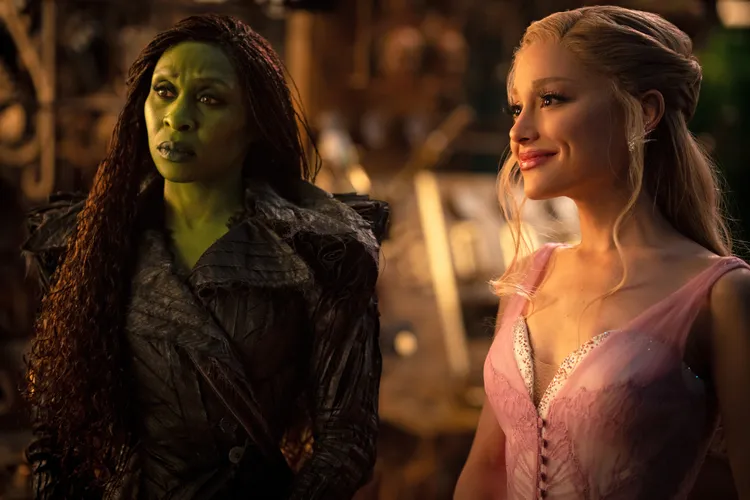
In the first part of Jon M. Chu’s grand screen adaptation of the beloved Broadway hit Wicked, it was Ariana Grande and Cynthia Erivo’s performances that not only grounded the story and its stakes but also expanded the center of the film through their deep exploration of female friendship and love.
The consequences of splitting this story into two parts, and the bloated fan-service that comes this side of The Wizard of Oz and the yellow brick road (more on that later), are detrimental to this sequel, leaving Grande and Erivo to do everything they can to save this film. And try as they might with powerhouse vocals and their fully lived-in chemistry, even these two Oscar-nominated artists find themselves lost in the mix within Wicked: For Good.
This sequel kicks off where Wicked left off, with Glinda now assuming her public-facing role as Glinda the Good (Grande), marrying Prince Fiyero (Jonathan Bailey), and Elphaba (Erivo) hiding away in fear, fighting to survive as everyone in Oz wants her burned alive, as orchestrated by Madame Morrible’s (Michelle Yeoh) vicious propaganda. The film introduces two new numbers, including the pretty forgettable No Place Like Home and Glinda’s fitting solo The Girl in the Bubble, but otherwise sticks fairly close to the source material. Considering that the second act of the musical has always been considered more divisive, perhaps that wasn’t such a good idea.
If there’s one element of For Good that is stronger than the original, it’s Bailey’s performance as Fiyero, who, dare I say, actually has a nuanced and complicated arc! Erivo and Grande, as previously mentioned, are excellent, returning with their unmatched friendship. Grande, in particular, gets an expanded arc this time around, one that allows her to play naive while also tapping into a rare dark side. It’s a fine line she has to play in every moment between Glinda’s outward persona and her true affection for Elphaba. If Erivo ran away with the first movie with Defying Gravity, then Grande has the true staying power of this sequel. However, Bailey, Erivo and Grande alone can’t make this film overcome its deep structural issues.
One of the central problems with the screenplay here is that almost every scene feels like an interstitial moment, where character tensions are being teased, and we’re told (told is the key thread throughout this film) that the stakes are increasing. For instance, the scene when the animals in Oz are being exiled from their home, as we get in pretty much the only moment the animals are actually shown, makes it clear that the only goal with their inclusion is to manipulate the audience into feeling sad. Alternatively, take the first moment Elphaba comes to visit Glinda in secret, which, in part, is supposed to illustrate how in danger Elphaba truly is. Because so much of the Oz action happens offscreen, though, the film never makes us feel just how in danger Elphaba is aside from one moment in the forest.
The issue is that there’s not much we actually get to see of the material consequences here, either from the conflict introduced in the first film or new problems established here. Never do we see how the animals are coping with being forced off their land, nor do we understand how Elphaba, assuming the role of the Wicked Witch of the West and starting to feel like maybe she is, in fact, a monster, actually affects the people of Oz. The action that happens around the characters, and the consequences of Elphaba and Glinda’s decisions, feel completely thwarted. And as the film’s aesthetic turns grey and muddy in the third act, it’s hard to even enjoy what we’re looking at despite the brilliant work of costume designer Paul Tazewell and production designer Nathan Crowley, who properly pay homage to classic MGM musicals in some practically impressive moments.
Elphaba embraces the role of the Wicked Witch of the West, and Glinda finds herself overcome by emotion in a plot point relating to Elphaba’s sister, Nessarose (Marissa Bode), but the structure of the story makes it difficult to know where character motivations actually lie with such an inconsistent tone. Character beats aren’t given time to fully breathe, like with Elphaba and Fiyero’s blossoming romance; As Long as You’re Mine is a great showcase for these two vocalists, but the script doesn’t seem keen on building or developing their relationship any further beyond that.
It’s almost as if Chu and the writers were too afraid to let these characters leading a multi-million dollar four-quadrant epic make messy, sometimes horrible decisions, so when it’s time for Elphaba and Glinda’s climactic duet For Good, there’s not nearly as much catharsis in watching Grande and Erivo’s heartbreaking performances as there should be. And with a 137-minute runtime, there was plenty of time here to explore the messier facets of these characters.
What Chu dedicates more screentime to is The Wizard of Oz tie-ins. And yes, Victor Fleming’s 1939 classic is essential to this story, and maybe there was no way of getting around the Dorothy of it all. But it’s undeniably awkward to watch transitional scenes (scenes is too strong a word here) where Dorothy, the Scarecrow, the Tin Man and the Cowardly Lion move from place to place simply for the sake of tying loose threads together. Because it has to connect to The Wizard of Oz, of course! But is there any entertainment value the audience gets, or stakes present within these moments other than reminding the audience of what greatness they could be watching instead? It doesn’t help that these moments are inconsistent in how they’re filmed, too, and the wide shots of them traveling on the yellow brick road feel like the audience is in CGI land.
With all that in mind, and considering where this sequel falls short, it’s important to remember that Wicked has found its thematic power ever since the original 1995 novel by Gregory Maguire in exploring propaganda and the influence our leaders have on how the public perceives — and often fears — the wrong people. But in For Good, it’s all just too on-the-nose and directly stated to the audience. A more interesting exploration of these ideas might’ve tried to place the audience in a position where we can emotionally understand how easily people can be manipulated and made to fear the people actually trying to save them — certainly a relevant theme to touch on in the times we’re living in.
One moment where the film actually does seem to attempt that is in another brief fakeout with Jeff Goldblum’s Wizard character, and the plan he gets Elphaba and Glinda to agree on before Glinda and Fiyero’s wedding. Unfortunately, this choice is entirely confusing because the audience is already conditioned not to trust a word the Wizard says after the end of the first Wicked. Goldblum has a charming and well-suited number, Wonderful, where he charmingly sings about deception, but it’s clear the film just doesn’t know what to do with the Wizard this time around.
As the film’s opening weekend box office records and audience scores have already indicated, the most die-hard Wicked fans will certainly find something good in For Good. What should be celebrated about this film, in spite of its faults, is the work of the countless artisans who brought Oz to life with practical effects. Glinda’s apartment, in particular, creates a perfect image of the curated bubble she lives in — beautiful yet solitary. But the hard work of Wicked’s brilliant artisans can easily get lost, especially when the film leans heavily into CGI and shots going for “realism.” With its unsatisfying tie-ins to The Wizard of Oz and fractured structure, For Good leaves much to be desired when Grande and Erivo aren’t creating priceless movie magic on screen together.
-

 a&e features4 days ago
a&e features4 days agoJonathan Bennett: making ‘Finding Mr. Christmas’ Season 2 with heart, and telling gay love stories for broad audiences
-
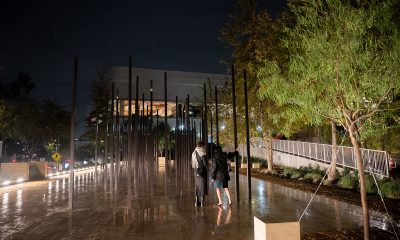
 West Hollywood4 days ago
West Hollywood4 days agoWest Hollywood kicks off community-focused programming for World AIDS Day
-
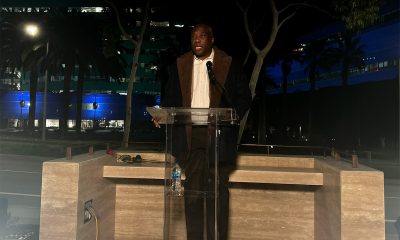
 West Hollywood3 days ago
West Hollywood3 days agoAdministration refused to honor World AIDS Day; residents gathered with defiance, grief and love
-
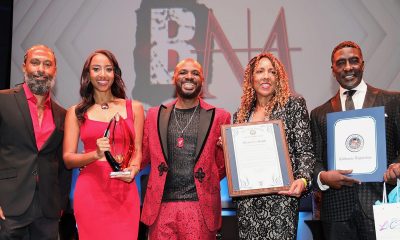
 Events1 day ago
Events1 day ago“Still Standing” uplifts Black, queer voices in annual World AIDS Day event
-
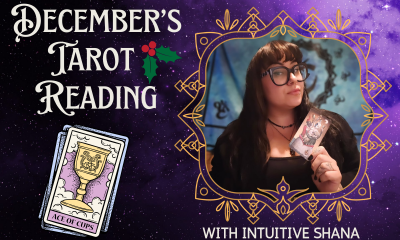
 Tarot Readings and Astrology4 days ago
Tarot Readings and Astrology4 days agoDecember is a time for reflection, celebration, and tying up loose karmic threads in Intuitive Shana’s December tarot reading
-

 National3 days ago
National3 days agoFaith leaders denounce anti-transgender attacks
-
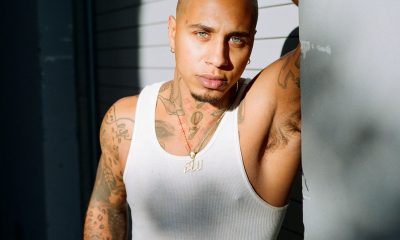
 a&e features3 days ago
a&e features3 days agoExploring a different side of Los Angeles influencer Javonte Rose
-
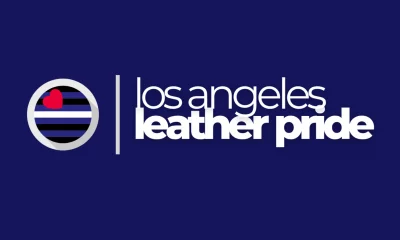
 Leather community4 days ago
Leather community4 days agoLeather, legacy, and a little lust: Celebrating 25 years of LA Leather Pride
-

 a&e features2 days ago
a&e features2 days agoDrag queen Kennedy Davenport dishes on her new comedy special
-
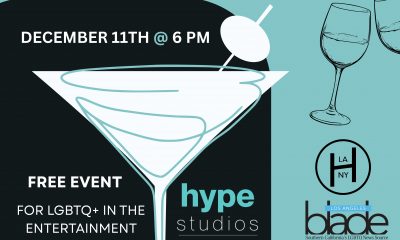
 Bars & Parties19 hours ago
Bars & Parties19 hours agoLA Blade & Hyperion LA Studios partner with CinedPride Film Festival for the return of Queer Room, a free, entertainment industry mixer for the queer community

